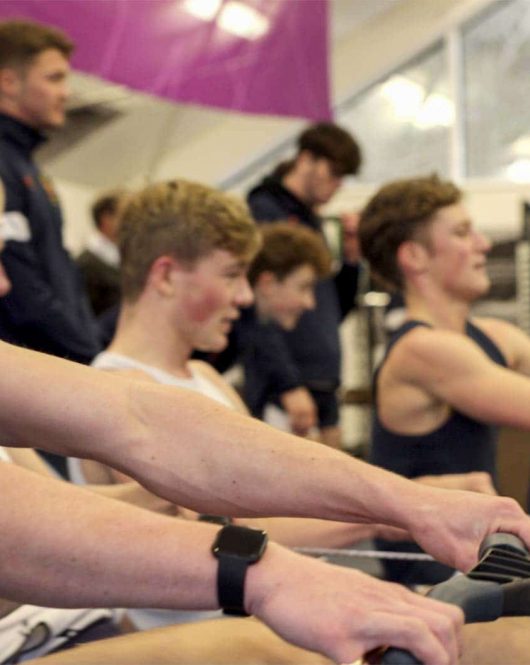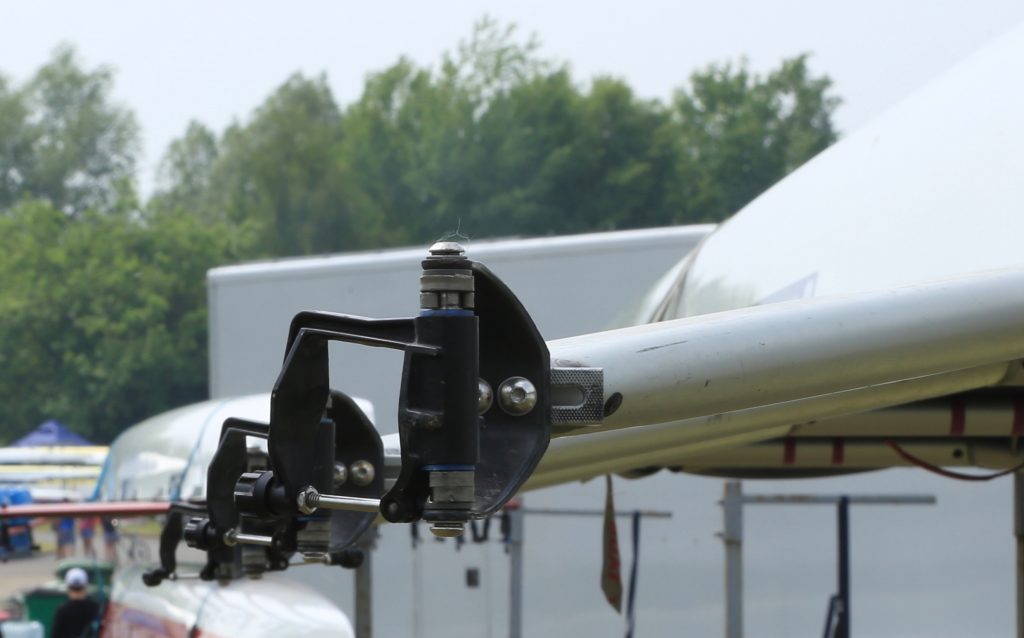Dr. Conny Draper is the world leading expert on Biomechanics in Rowing. Here she concentrates on the three main areas of focus within the rowing stroke that lead to most gains. Explaining how pressure on the foot stretcher during the recovery may well be the most impactful technical aspect to focus on when coaching crews. Achieving optimum crew synchronisation, as we all know, leads to tremendous speed gains.
On 26 March 2017, Ludum hosted a workshop at Shiplake College, UK in which applied sports biomechanist Conny Draper discussed the power of telemetry. Draper also showed the audience how best to set up a telemetry system, explaining the common mistakes people make when using telemetry.
Draper travels the world and works with many international teams and universities. Her insights and explanations were excellent, providing a very educational experience for those attending.
In terms of biomechanics and the use of telemetry, Draper spoke about the existence of ‘windows of opportunity’ in the rowing stroke. These ‘windows’ are areas of the stroke where the use of biomechanics can generate considerable gains in speed without having to add extra power or force built largely in the gym.
These ‘windows’ are found at:
- the catch
- the finish
- and when the boat begins to decelerate.
From Draper’s analysis, it became evident that, while power measured on the gate is a useful if crude number, the better number to measure is the net force on the boat.
“Net force is when the force on the gate is greater than the force on the foot stretcher,” said Draper.
During the recovery phase of the stroke, the force on the foot stretcher is greater than the force on the gate. This will be the case until the blade is covered in the water at the catch. However, even then if the athlete applies significant upward body movement near the beginning of the stroke, the force on the stretcher will be increased so that it is temporarily greater than the force on the gate.
The consequence of the stretcher force being greater than the gate force is that the hull decelerates. “Deceleration on the hull occurs when the foot stretcher force is greater than the gate force,” said Draper.
Hull deceleration is something that should be minimised, especially on the recovery where boat speed will naturally drop as athlete weight in the boat transfers towards the stern. By adding pressure onto the foot stretcher as late as possible, the negative effect on the hull will be minimised. As soon as such force is placed on the stretcher, the boat’s deceleration will increase.
At the catch, when the athlete is at full compression, the athlete’s legs will then drive down, adding significant pressure onto the foot stretcher. If the blade is still in the air at this point, the pressure applied to the foot stretcher to drive the boat is not being used efficiently.
The implication of this is that, in order to achieve the right efficiency at the catch in co-ordinating placement of the blade and application of pressure to the foot stretcher, good preparation on the recovery is required. Being in the correct positions at the right time is crucial.
Easy?
Well, not really. There are many factors that can affect the timing and co-ordination of the catch at the front end of the stroke. One factor that Draper emphasized was handle speed on the recovery. If the handle speeds within the crew are not synchronized, the effects are significant. The challenge here is particularly acute as ratings increase. At rate 20, the ratio of the stroke is about 1:3; at racing temp, it is nearer 1:2. The change in time taken for the drive phase is negligible, but the recovery time is as much as halved. Thus, at race pace, the athlete has much less time to get movement right on the recovery, while still having about the same time to sequence the drive phase correctly.
Draper then demonstrated to the delegates how to use the power line system that rowing telemetry and instrumentation company Peach Innovations provides to support data analysis.
Draper’s presentation was hugely informative and enjoyable, with all the coaches who attended saying they found it useful.
Ludum thanked both Conny Draper for running the workshop, and Paul Haines (Peach Innovations) for being available to both engage with participants and provide input into the workshop discussions.
Ludum intends to run more such workshops in the future.
For an April 2020 discussion on this topic by Conny Draper with Row.Team, see: https://youtu.be/zqhbk9UYxH8
View more content like this

The sliders indoor rowing test | Rowing tips from Shrewsbury School Boat Club
“The pain hits you within the first two minutes!” “It’s awful in terms of lactate build-up…” “Why would you put yourself in that much pain…?” Most rowers will
Why use Biomechanics?
Dr. Conny Draper is the world leading expert on Biomechanics in Rowing. Here she concentrates on the three main areas of focus within the rowing
Ludum live streams The Boat Race Trial Eights 2022
It’s no secret that Ludum was born from the rowing community, we were originally called Rowe.rs after all! But despite the fact that we now


